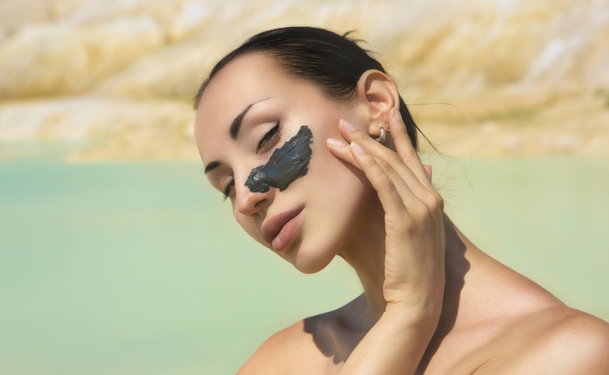An ingrown hair is caused when a strand of hair grows inwards, towards the hair follicle instead of growing in the normal, outward direction. The ingrown hair is visible in the form of an inflamed bump that has a distinct, acne-like form. Rather than depending upon chemical formulations, a safer and equally-effective aid is using a mud mask.
Effectiveness of Mud Mask in Treating Ingrown Hair
A mud mask is able to get rid of ingrown hair because it treats the affected skin in many ways:
- Aids Exfoliation—a mud mask acts as a natural exfoliation agent. This means that the slightly abrasive ingredients of mud mask help to gently peel-off the dead skin cells along the surface of the skin. The removal of dead skin cells reduces the overlying weight on the hair follicles, promoting the normal (outward) growth of hair.
- De-clogs Pores—a mud mask contains biologically-active compounds that neutralize the impurities present in the follicles. This includes oil secreted from the surrounding pores that often gets cemented in an ingrown hair, making it more susceptible to becoming infected. A developing ingrown hair is often infected with bacteria that lends the ingrown hair its inflamed appearance. The mud mask’s ingredients fight-off the bacterial infections and reduce the excess secretion of sebum.
- Rejuvenates Skin—a mud mask helps to camouflage the presence of an ingrown hair. This is because regular application of mud mask invigorates the skin’s natural healing process. This can be understood as skin rejuvenation which renders the skin a more radiant, slightly-fairer hue, helping to camouflage the presence of dark spots formed by ingrown hairs.
Creating Mud Mask
You can prepare a variety of mud masks for treating ingrown hair. One recommended preparation is mixing the following ingredients to make your mud mask at home:
- 1/2 cup of dry facial mud
- 2 tablespoons of finely-ground oatmeal (the exfoliating agent)
- 1 drop of chamomile oil
- 1 drop of lavender oil
- 1 drop of peppermint oil
- 1 drop of eucalyptus oil
Mix all these ingredients using a bit of water. Ensure to maintain a thick but workable consistency. Use a glass bowl for mixing the ingredients, since glass presents a non-toxic, non-reactive surface.
Applying Mud Mask
Thoroughly clean your face. Ensure that any cosmetic application is properly washed-off. Use a gentle cleanser to clean the grime. Tie-up your hair if they tend to hang around the forehead. Don’t use cold water for washing your face. The skin needs to be slightly warm to aid absorption mud mask ingredients. Lukewarm water is recommended.
Using a spoon, scoop-out some of the mud mask on your palm. Using your fingers, take some of mud mask paste and start applying it on the skin. If you are applying it on the face, ensure not to apply the paste on your eyes. However, apply the mask around the eyes. Use slow, steady strokes to spread the paste all over the face. Gently massage the mud mask paste instead of rubbing it hard. The massaging ensures exfoliation of the skin.
Allow the applied mud mask to dry. Ideally, you should wait for about 15 minutes. Now, using a slightly wet fingertip, test the dried surface of the mask. Ideally, the mud mask shouldn’t come off readily when you rub your wet fingertip against it. Use a sponge dipped in lukewarm water to remove the mask. Use slow, circular strokes to wipe-off the mask. Wash your face with lukewarm water. Now, pat dry your skin. Apply a moisturizer on the treated skin.



